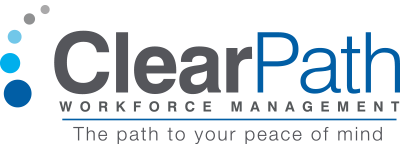In today’s gig economy, businesses may wonder what the most cost effective and risk adverse way is to engage direct-sourced contingent workers for their organization. Directly Sourced Contingent Workers is a service segment of the Contracting/Consulting Industry. This includes temporary workers and independent contractors/consultants, workers sourced from an internally developed pool of talent, others such as summer interns, seasonal workers, retirees, and other contingent workers not sourced from a third-party staffing supplier.1
Before finding the right person for the job, you will need to create a plan for paying the worker. The first step in creating a payment plan is to correctly classify that person as an employee or independent contractor. There are many issues surrounding worker classification, including financial and legal risks if you get it wrong. If you need assistance, ClearPath offers worker classification solutions to evaluate your contractors (ClearIC), and complementary advisory services and training on Independent Contractor Compliance.
If you decide to engage the worker as an employee, the next step in creating a plan is to choose the type of payroll method. There are several payroll methods to choose from: In-House/Pay Direct, Employer of Record (EOR), Professional Employer Organization (PEO) or through a Staffing Firm.
On ClearPath’s newly updated website, there are three calculators that can help your organization with the decision-making process. We have payroll savings and misclassification risk calculators.
PAYROLL SAVINGS CALCULATOR
ClearPath’s Employer of Record clients save an average of 15–35% on their payroll costs as an alternative to using a traditional staffing firm. By entering answers to a few questions (the number of contractors, the average length of assignment, and the pay rate per hour), our calculator will show you what your potential savings would be. Savings are presented as the time period of the average length of assignment based on input. (The calculation also assumes a clerical/professional worker’s compensation classification code. Actual results may be more or less, depending on the actual worker’s compensation classification of the position and the current rate you are paying for the services.)
RISK CALCULATOR
ClearPath can assist you in discovering how much risk exposure your organization could have from non-compliant/misclassified Independent Contractors/1099s. By responding to a couple of questions, such as the number of 1099s, % in non-compliance*, and annual payment of the independent contractor, we can show your estimated penalty range for every dollar you pay a 1099 contractor who is misclassified. The estimated penalties range from 70%-75% or more for every dollar (for non-California states) you pay a 1099 contractor who is misclassified. If you do not know what percentage of your company’s 1099s are in compliance with the rules governing the use of 1099s, we recommend using the figure of 62% in your calculations.
*Our market research, combined with statistics from the GAO (Government Accountability Office), shows that an average of 62% of 1099s are not in compliance.
Note: This risk exposure does not include other costs associated with reclassification, such as wage and hour/overtime/benefit claims.
CALIFORNIA RISK CALCULATOR
A new California labor law, Assembly Bill 5 (AB-5), went into effect on January 1, 2020. It is already changing how businesses treat workers and increasing the business owner’s risk of continuing to engage independent contractors. This is why ClearPath created a specialized online California risk calculator to assess your potential exposure from worker misclassification.
AB-5 is a state statute that codifies into law a landmark Supreme Court of California case, Dynamex Operations West, Inc. v. Superior Court. In that case, the court held that most workers are employees, ought to be classified as such, and the burden of proof for classifying individuals as independent contractors belongs to the hiring entity. AB-5 stipulates that the ABC test will be used to determine whether California workers are employees or independent contractors (ICs). AB-5 entitles workers classified as employees to greater labor protections, such as minimum wage laws, sick leave, and unemployment and workers’ compensation benefits, which do not usually apply to independent contractors. The new law applies to all California workers, except for those in several job categories who were specifically exempted from the strict worker classification. Other states are following California’s lead and proposing similar legislation.
Your organization will need to determine the level of risk you are willing to accept. If your organization is audited by the IRS, NLRB, DOL, EEOC or any of the state auditing agencies, your company could be responsible for misclassified workers and may face fines and penalties, including back-tax assessments.
The penalties charged by California’s Employment Development Department (EDD) alone are substantial. Their published penalty is 142.3% of every dollar paid to an IC that is deemed to be a misclassified worker. This means if you pay the worker $1,000, then your organization would owe the state $1,423. That is just for one state agency. California has an active Memorandum of Understanding to share this misclassified information with the IRS and possibly other agencies. In the state of California, the financial risks from an Independent Contractor being reclassified includes back-tax assessments, fines and penalties that are even greater than most other states. The estimated penalties in California range from 160% to 164% or more. (Note: This risk exposure does not include other costs associated with reclassification, such as wage and hour/overtime/benefit claims.)
Are you engaging independent contractors compliantly? Even if you do not do business in California, you might want some advice on classifying workers appropriately. Independent contractors can remain a viable operating option, and if your organization needs some help ensuring your ICs are classified properly, ClearPath Workforce Management has an IC evaluation process and risk mitigation services that bridge the gaps to enable compliant engagement of this highly skilled talent and to expand your talent supply chain. ClearIC™ can automate and simplify the Independent Contractor evaluation process while mitigating your risk via our full-service IC vetting process. Contact ClearPath for a complimentary 1:1 review of your current worker status.
Sources:
- Written by: Connie Wendt
- Posted on: May 11, 2020
- Tags: EMPLOYER OF RECORD SERVICE, ENGAGING W-2 WORKERS, FORM I-9, FREELANCER, INDEPENDENT CONTRACTOR COMPLIANCE, TEMPORARY WORKER, W-2 Worker Classification

